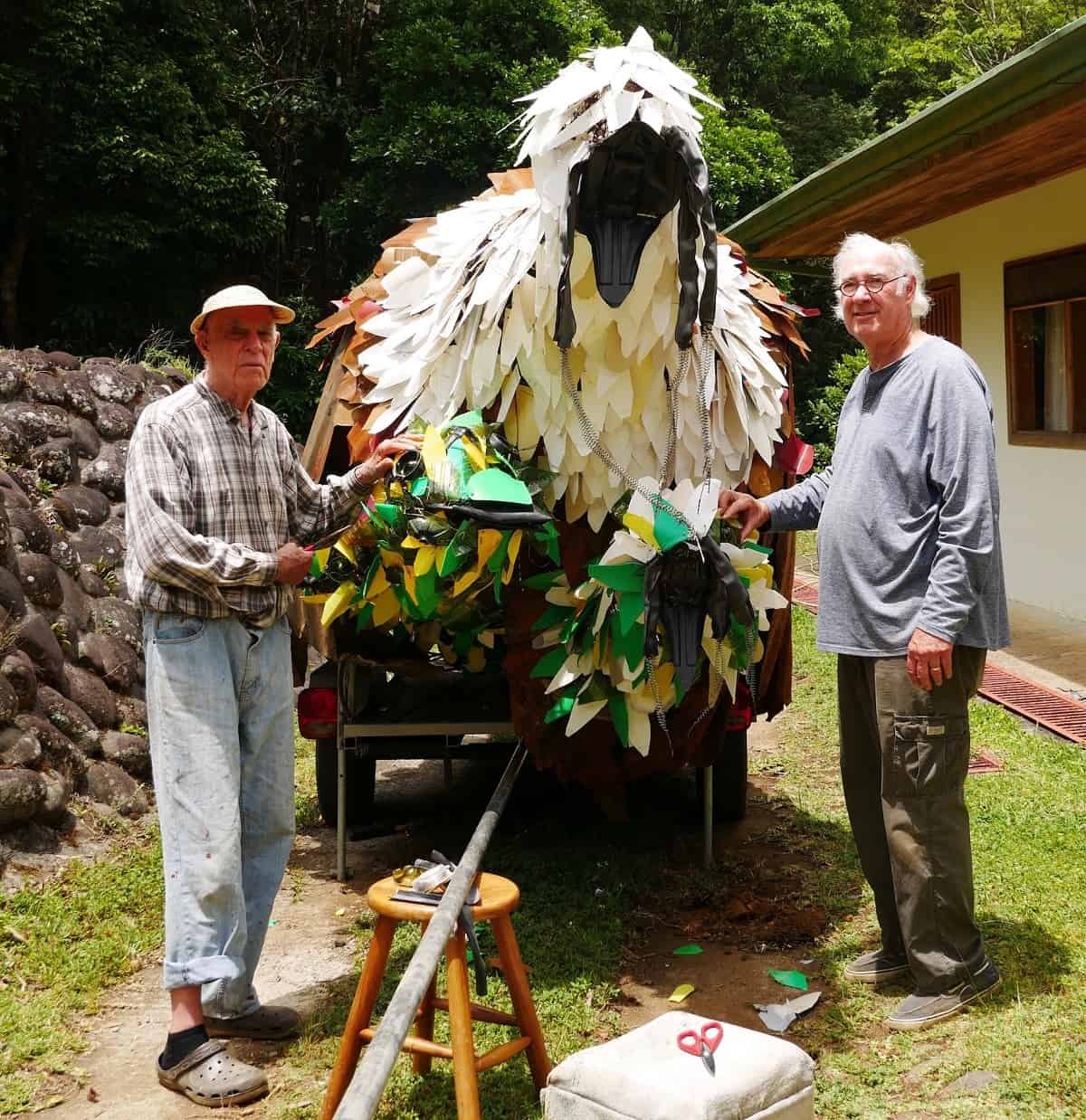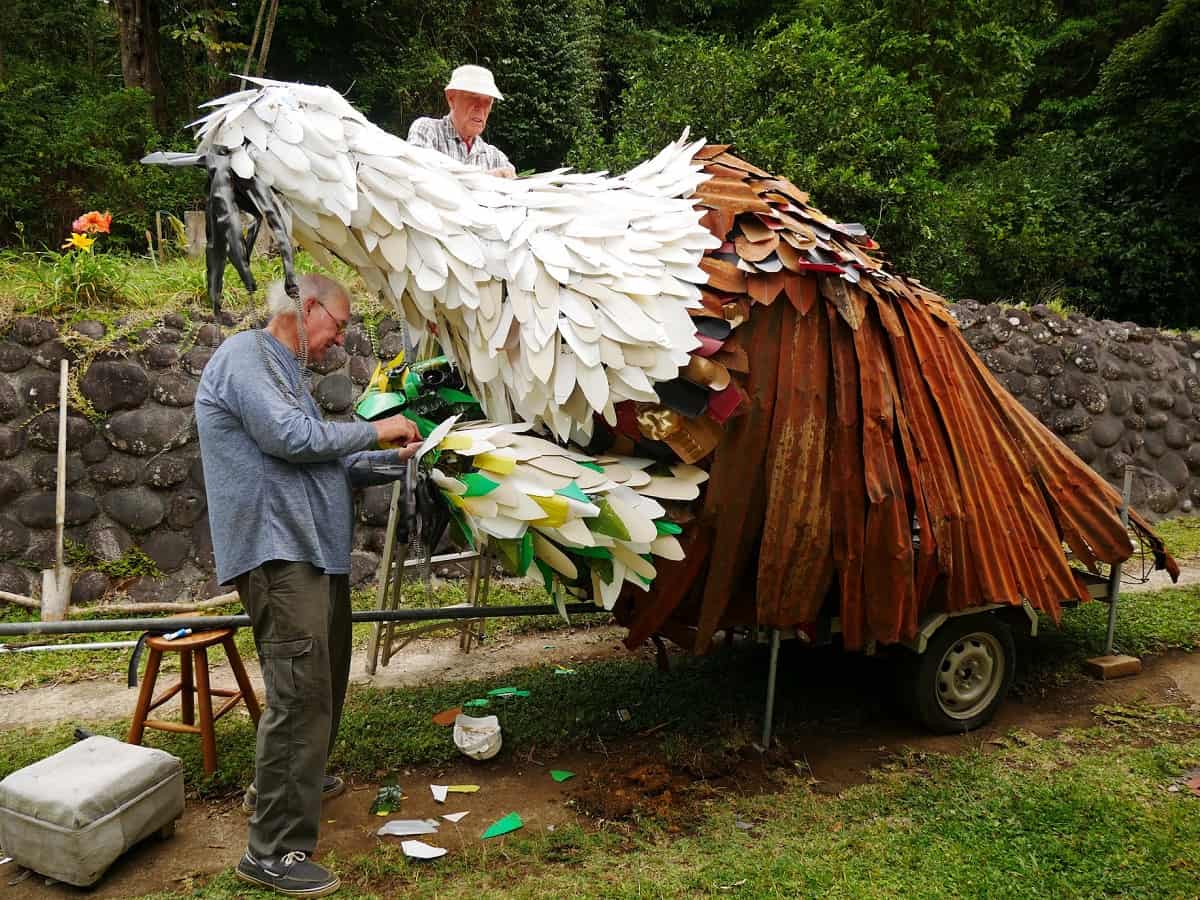I will never forget an announcement after a Quaker Meeting in Monteverde 45 years ago when an elderly member got up to demonstrate the marvel of something new.
“See how it will not tear or wrinkle.” She was showing us a plastic bag. Phenomenal! We were all impressed, not yet aware that plastic is a fossil fuel by-product.
How times have changed. Today, what to do with all the plastic has become one of humanity’s — and Monteverde’s —pressing dilemmas.
During my first ten years in our community perched in the cloud forest, I can’t remember one car in the Quaker parking lot Sunday mornings, and compost pits seemed to take care of all of our waste. Now, however, as much as we value tourism, we are suffering under heavy traffic. Each year there is a five percent increase in fossil-fuel cars, nationally and locally. Our parking lot — and our carbon footprint — gets bigger and bigger.
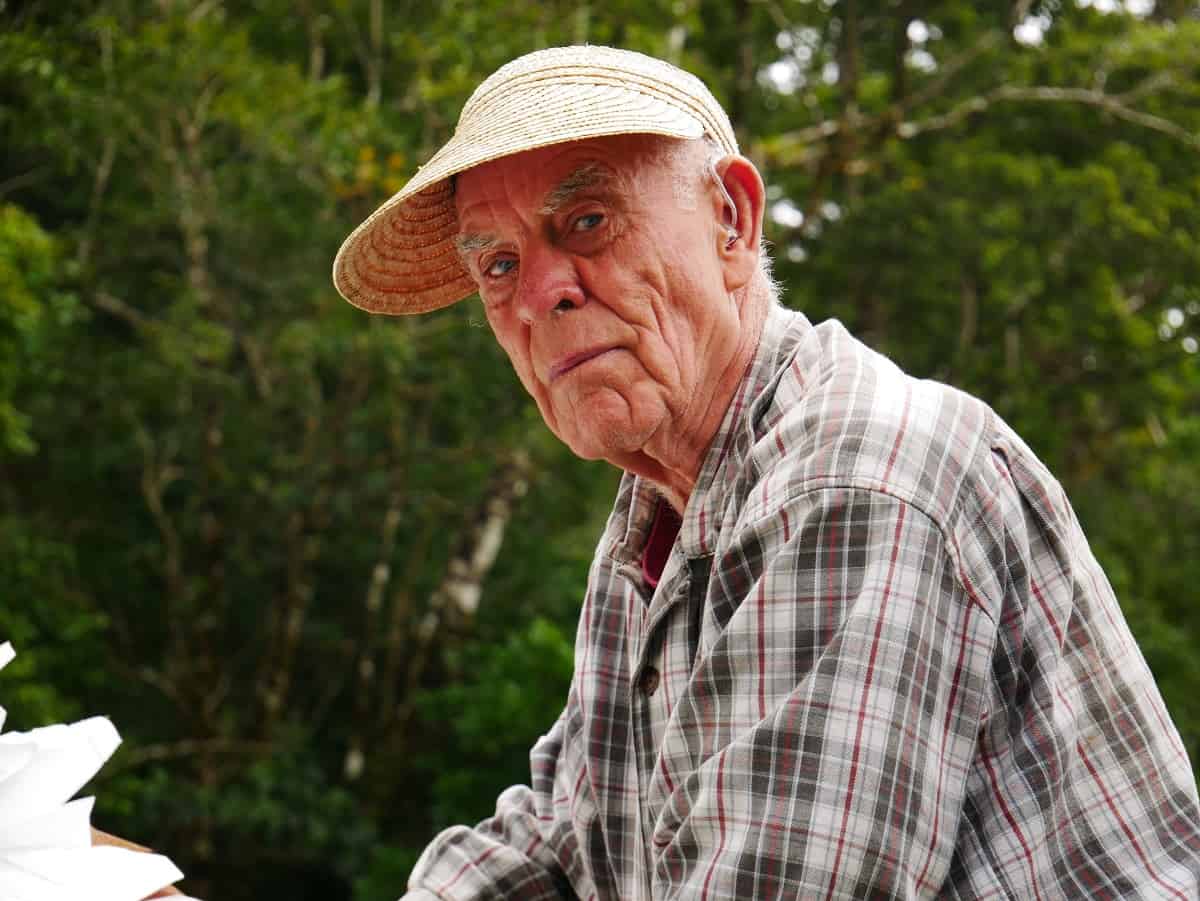
Though I am in my eighties, I ride my electric bike 3.5 kilometers down our bumpy mountain roads to the Friday Farmers’ Market. When pressed to drive, I use an electric golf cart powered by the sun, demonstrating that living carbon neutral is possible. For me, stopping climate change is a compulsion, though until this year I struggled to know how best to share my passion with others.
As a one-time dairy farmer turned artist, I have painted landscapes all around the world, built violins and cellos, and most recently created mosaics and murals, but last year I shifted to yet another medium when I became friends with John Frannea, a frequent visitor to Monteverde. John dreamed of making a mammoth sculpture from recycled materials of a Bellbird, an endangered species, whose bong-bong call high on the canopy is familiar to locals.
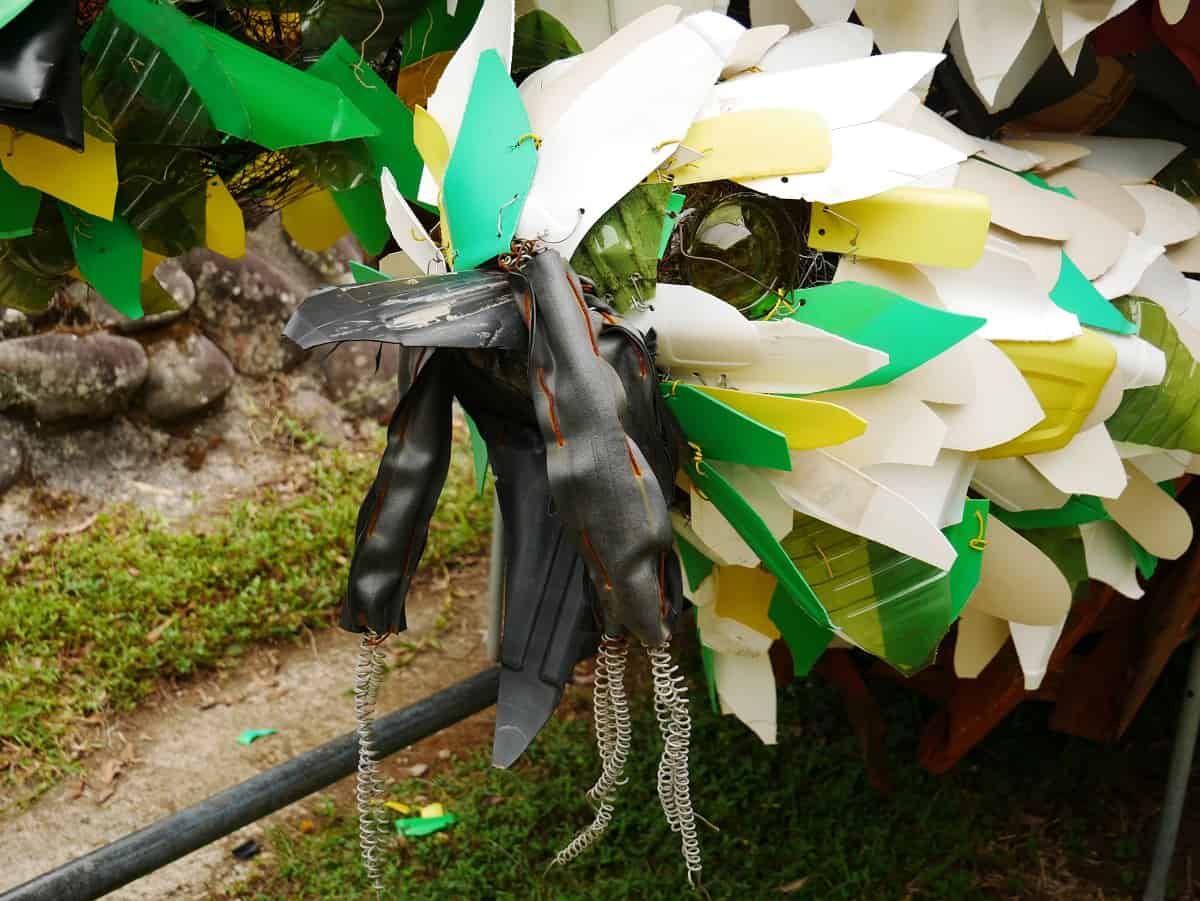
We committed ourselves to the project with a trip to the large recycling municipal shed where we collected white, brown, green, yellow and gold plastic. The mountains of clear water bottles with their unclear destinies shocked me. Here in Monteverde, our spring water is crystal pure. Nevertheless, we incur a great energy cost to the planet by transporting truckloads of water in small plastic bottles up and down the mountain. The plastic gets reshipped to the United States for reprocessing, goes to landfills, clogs rivers, and covers beaches.
Soon we were bending rebar into the shape of a giant Bellbird family: a male, a female and two of their young under spread-out wings, 10 feet high and 15 feet long. My job was to confirm that our bent rebar really looked like the Bellbirds. Then, along with John, I cut hundreds of feathers out of the plastic bottles, drilled holes in each one, and wired them, feather by feather, on to the chicken-wire mesh covering the rebar.
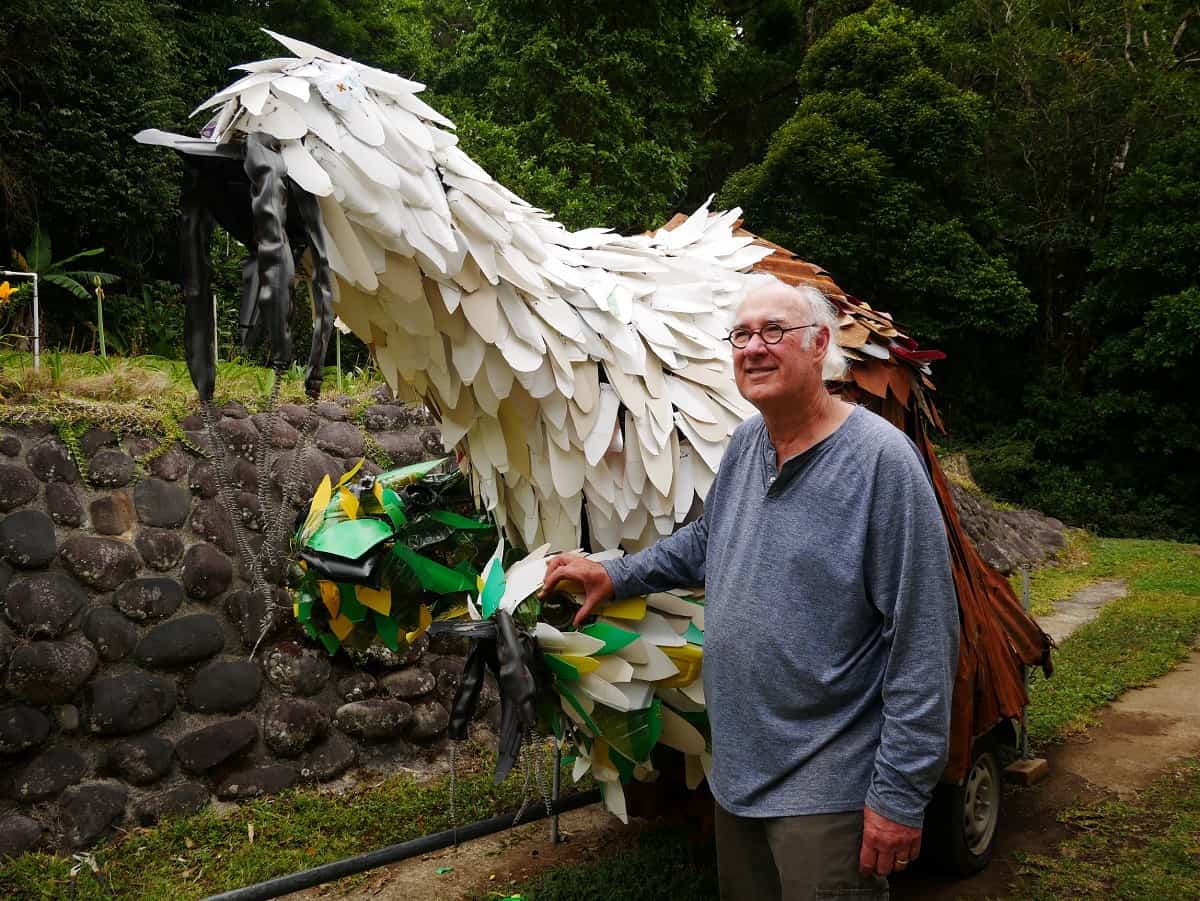
We had no problem finding white bottles to make the male’s spectacular white head, nor the yellow and greens for the mother and children. Our problem soon became finding the bright sienna colors for the male’s wings, tail, and back. As usual, a solution fell from the sky when I noticed a burned-down restaurant with a collapsed, bright, rusty tin roof — exactly the color we needed for all of the remaining feathers. We made our raids to this sorry site in the daylight, glad to be met only with polite smiles.
The day came to get the birds on a trailer John had purchased to make the sculpture mobile: 15 volunteers gave us a hand to lift the birds onto their new perch. The eyes will be made from wine bottles. When our birds are fully born, we will pull them in a kilometer-long march to protest climate warming. We hope that they will eventually make their home in a park or school playground with the following inscription: “Here is the King of the canopy with the loudest bird call on the planet. Let us not destroy its home.” A local conservation group will make use of the birds’ mobile possibilities to further environmental education.
One day far into the future, the chicken wire will fall apart and the wind will carry away our Bellbirds, feather by feather. The rebar will rust into the ground. In the meantime, I hope we humans will get the message so that future generations may enjoy clean air, healthy oceans, and the bong-bong song of these beautiful birds ringing out over the canopy of our cloud forest, the lungs of the world.
What will be the outcome of the race between our birds’ disintegration and humanity’s awakening? It is our choice.
Paul Smith, a one-time dairy farmer turned artist, has lived in Monteverde, Costa Rica with his family for 46 years.
